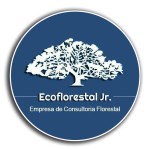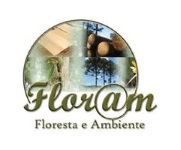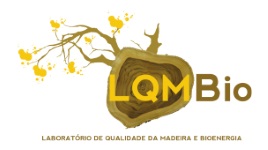ANATOMICAL DIFFERENTIATION OF CHARCOAL OF SWIETENIA MACROPHYLLA KING AND EUCALYPTUS SP. FOR IDENTIFICATION PURPOSES
03 - Bioenergy: Economy, Market and Policy
 1 MARCELO MENDES BRAGA JÚNIOR, 2 CELINE RAPHAELA VASCONCELOS PERDIGÃO , 2 EMILLY GRACIELLY DOS SANTOS BRITO, 3 FERNANDA ILKIU BORGES DE SOUZA, 1 LUIZ EDUARDO DE LIMA MELO
1 MARCELO MENDES BRAGA JÚNIOR, 2 CELINE RAPHAELA VASCONCELOS PERDIGÃO , 2 EMILLY GRACIELLY DOS SANTOS BRITO, 3 FERNANDA ILKIU BORGES DE SOUZA, 1 LUIZ EDUARDO DE LIMA MELO
1 UNIVERSIDADE DO ESTADO DO PARÁ, LIGA DE CIÊNCIA E TECNOLOGIA DA MADEIRA
2 UNIVERSIDADE DO ESTADO DO PARÁ
3 EMPRESA BRASILEIRA DE PESQUISA AGROPECUÁRIA
The anatomical characteristics of the wood are maintained after the carbonization, so bythe cell’s characterization that make up the wood, it is possible to identify the charcoal,what make possible the anatomical characterization of the charcoal from illegally cut tree species, with the possibility of being applied as a tool for monitoring. In this context, the objective of this academic work was to provide a subsidy for the identification of charcoal of the Swietenia macrophylla specie, that is in danger of extinction, and differentiate it from a hybrid's charcoal of Eucalyptus grandis x Eucalyptus urophylla planted in Amazon. The S. macrophylla wood was collected in reforestation planting located in the urban area of Marabá city in the state of Pará and the hybrid E. grandis x E. urophylla from the commercial plantation of Siderúrgica Norte Brasil SA (SINOBRAS) installed in the city of São Bento do Tocantins-TO. Five individuals were selected per specie, so samples were removed by non-destructive method of the stalk at 1.30 meters from the soil. For the of charcoal production the material were wrapped in aluminum foil and carbonized in a muffle furnace with a final temperature of 450 °C and a heating rate of 1.66 °C. The charcoal anatomical description followed the recommendations commonly used for wood anatomy. After carbonization S macrophylla specie presented solitary vessels and multiple radial without obstruction, averageof 12 vessels number mm-2 and tangential diameter of 115 μm, the wide rays with 3-5 cells per series and average of 8 rays per millimeter, the marginal type of axial parenchyma, well as the stratification of rays, the characteristic of species, have been preserved. For E. grandis x E. urophylla hybrids vessels predominantly solitary (90% or more) in diagonal and/or radial pattern and tangential diameter of 88 μm, rays predominantly uniseriate with average of 20 rays per millimeter, presence of tyloses and axial parenchyma paratracheal vasicentric and unilateral type were maintained even after carbonization. Based on the results, the possibility of taxonomic determination from carbonized material was confirmed, S. macrophylla charcoal differs anatomically from Eucalyptus sp. ones, useful characteristics for this species distinction were presented and will be relevant as a tool for the monitoring of charcoal trade in Amazon.
Keywords: anthracology; comparative anatomy; amazon
Acknowledgments: Empresa Brasileira de Pesquisa Agropecuária Amazônia Oriental

























